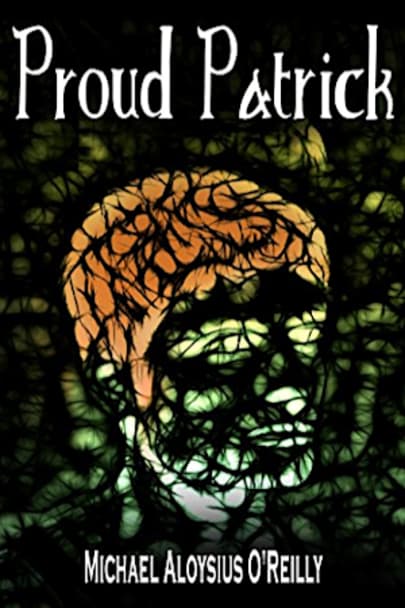CLICK TO READ A FEW OF THE OVER THE TOP REVIEWS A touching family saga of the Chicago Sullivan clan who descend en masse upon Dublin to celebrate the Golden Anniversary of Bridget and Barnaby Sullivan. The well-scheduled week–to be lubricated by Jameson’s and Guinness–is upended when Patrick the Prodigal of twenty years appears. Family pain, family joy. ‘In Sunshine and In Shadows’



After reading Proud Patrick, I took it into my head to visit Michael O’Reilly’s profile on Goodreads, where I learned that he counts among his main influences, not only writers such as Forster, Hardy, Joyce, Melville and Shakespeare, but also filmmakers such as Bergman, Cassavetes, Kubrick, Kurosawa and Lean. I found this list of luminaries to be intriguing, as I also think of my own writing in terms of film style – not a conscious and deliberate emulation of particular shots and scenes, but the grammar of film and the kinds of dramatic tension that great filmmakers know how to construct (see my post here).
The filmic qualities of Proud Patrick are much in evidence. It commences in medias res with a systematic beating of young Patrick Sullivan and his many sisters and brothers by their mother, known as MomsaBomb. The scene is distressing, particularly when we learn that each child has developed a set of tactics for escaping a comprehensive wacking with mother’s aluminium egg flipper: Rosemary runs and Jenny screams (no matter who is struck), while Patrick smiles beatifically and his brother Dougie plays dead. Only the two infants, Kevin and Larry, escape torture, as they are believed to be too young to have broken into the piggy bank and stolen MomsaBomb’s rainy day cash. The very fact that the children have tactics adds to the horror, as their defence mechanisms are clearly the bitter fruit of long and painful experience. Thus are we plunged into the heart of the Sullivan family’s dystopia, which also includes a drunken and brutal father.
The trouble with troubled families is that they transmit conflicting signals: nightmare is interspersed with love and affection, for which their victims are pathetically grateful. It is no wonder that children cannot make proper sense of their experience, and become adults with problems of their own. Patrick becomes one such adult. Sometimes bitter and rebellious, at other times indifferent, he seems unable to establish lasting relationships with the women he loves. Even his success as a salesperson for superior Californian wines seems rooted in a need to subdue his troubled past.
Michael O’Reilly imbues Patrick with anger and vulnerability, self-knowledge and self-doubt, so that he is wonderfully alive and always interesting. We enjoy his company even when he behaves abominably. Similarly with the rest of the Sullivan clan, especially Patrick’s parents, who are monsters of inexhaustible weakness and monumental rage. These parents are truly awful even on the rare occasions when they are being nice. Barnaby the father, for example, cooks Sunday breakfast for his children in the warm afterglow of his regular Sunday morning tumble with his wife – common knowledge to them all, so that the joy and laughter in the kitchen are inappropriately overdetermined. Such events and characterizations are splendid achievements. O’Reilly has a great gift for delineating people and places in a few words, so that we are completely persuaded of their reality.
The structure of the novel is also very filmic. Much of it is told in flashback, while Patrick flies to Dublin for a family reunion to celebrate his parents’ golden wedding anniversary. It is here that the writer’s debt is (to my mind, at least) Kubrick’s multi-flashback The Killing (1956), and especially John Brahm’s delirious 1946 film The Locket, which is told in multiple nested flashbacks. Patrick thinks back to his relationship with his lover, who then asks him leading questions to enable him to tell her about himself. This double-flashback structure is repeated many times. Some readers might find this confusing; it certainly asks a lot of their concentration. I had to remind myself to remember that Patrick was in the aircraft recalling himself at one point in his life recalling himself at another point in his life. I remain unconvinced that this structure works or is necessary.
The family celebration itself is set up as a big climactic scene in the manner of a film’s final reel. Patrick’s memory laden journey across the Atlantic is freighted with expectation. All the Sullivan clan are assembled, alcohol flows freely and emotions run high. It was here that I looked forward to a moment of reckoning in the manner of Thomas Vinterberg’s Festen (1999). Patrick has been established as the figure ideally equipped to confront the iniquities of his parents, to explode the myth of family unity. But things don’t work out like that. In addition, two similar events take place in rapid succession, one of which effectively puts an end to further possibilities. While the family’s reaction to the first of these events is in its own way quite horrifying, I felt deprived of a scene that I think really should have been written. Afterwards, it seemed to me that too many loose ends were tied up rather cursorily.
Despite these reservations about structure, I greatly enjoyed Proud Patrick. I am sure that lovers of literary fiction will also find it a real treat. The novel is written with huge self-confidence and immense talent. As they used to say in the movies, its considerable virtues are worth the price of admission alone.